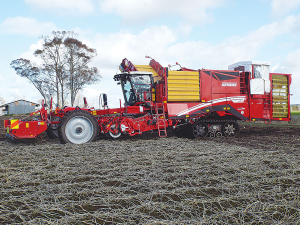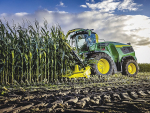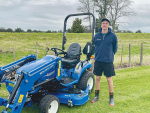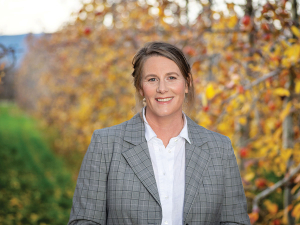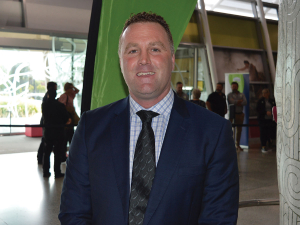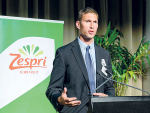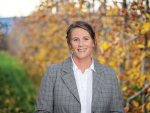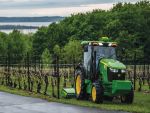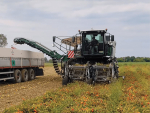Growing potatoes requires suitable ground, an experienced workforce and a substantial investment in plant and machinery.
S T Growers, based near the vegetable heartland of Pukekohe, has been operating for more than 35 years, with a Global GAP accredited packing operation at Tuakau. Aiming to grow high quality produce, the business pays special attention to sustainability – with longer crop rotations, the use of cover crops and optimal cultivation and harvesting techniques.
In a typical season, the company grows around 200ha of potatoes, mostly for the chipping industry.
Until recently, the harvesting part of the equation centred around two older, two-row trailed machines. Along with drivers, these machines needed a team of around 10 employees to harvest 50 tonnes of crop per day.
However, as with much of the agricultural sector, hiring and retaining good staff has become more difficult, with lots of mornings starting with an extended wait to see who would show up.
A recent major investment saw the arrival of a 15-metre long, 4m high and 25 tonne colossus from Germany in the shape of a Grimme Varitron 470 Terra Trac, self-propelled harvester.
Powered by a Mercedes 460hp engine, the machine has a four row configuration. It is equipped with a 7 tonne, non-stop bunker system, which effortlessly lifts up to 25 tonnes of spuds per hour. The machine has led to a reduction in labour of around 80% as it only needs the machine operator and one or two assistants on the final picking table.
Up front, a pulled diablo roller intake unit is equipped with TerraControl that automatically regulates ridge pressure and depth control. The hydraulically driven intake web and the first and second main webs are equipped with independent speed adjustment, while the fine haulm and ring elevators are reversible.
The first main web also incorporates a speed adjustable rocker agitator. The first extracting unit features automatic reversing, while the rear of the machine features a 1200mm ring elevator with canvas.
With ground compaction a major consideration for ST Growers, the front end of the machine is carried by 270-95R54 tyres. Meanwhile, the main body of the machine runs a Claas-sourced TerraTrac system, running on twin 800mm wide by 3000mm long rubber tracks.
These deliver a 2000mm contact patch that typically exerts only 9psi when fully loaded.
To aid manoeuvrability, the front steering angle is 63 degrees, while the undercarriage of the track system also offers a 15-degree steering angle. Ease of use with the machine sees a +/- 100mm side-shift system built into the front axle.
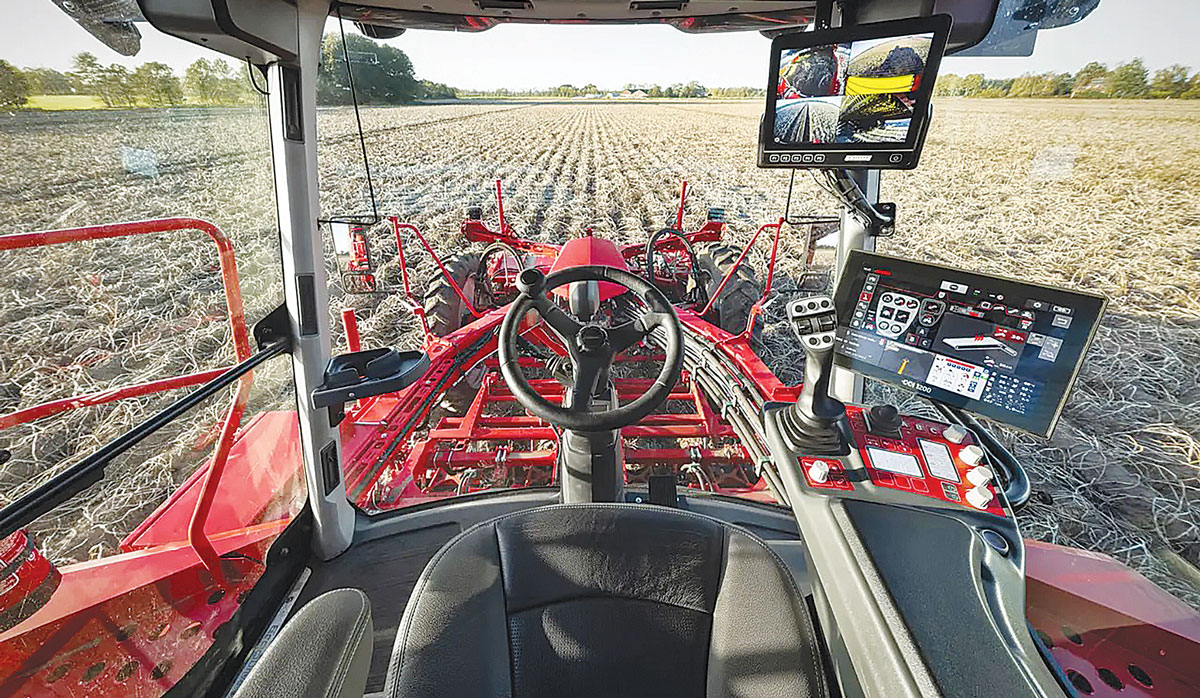 |
|---|
|
The harvester is aided by around 15 cameras mounted around the machine, to give visibility of any potential problem areas.
|
Up top, the operator sits in a Claas-sourced Vista cabin offering excellent visibility. It also features leather seating with active heating and cooling, climate control and Bluetooth connectivity.
Operations manager Karl Dempsey, a 25-year potato industry veteran with 5 years at ST Growers, takes control of the harvester with a multi-function joystick, with real time performance and adjustment taken care of via a panoramic display. This is aided by around 15 cameras mounted around the machine, which during any problems use the whole screen to give visibility in the problem area.
Unlike more typical Varitron 470s, this machine is unique and currently the only example in the world configured with a manual pick-off table.
This is manned by one or two operatives to remove.
“In reality, the fantastic lifting and separation quality we achieve means anyone on top gets a very easy life,” Dempsey says. “But we chose this specification because we lift and drop the harvested potatoes directly into one tonne boxes that go straight to Bluebird for chipping.”
Obviously, the removal of any transhipping and final cleaning at the packhouse means costs are substantially reduced.
“Jumping into the cab for the first time was a bit mind blowing after running the trailed machines, but the installation and support by the Claas Harvest Centre teams over the first few days was brilliant,” Dempsey adds.
“The machine is already pre-programmed with basic settings, which you can ‘tweak’ as you become more familiar. There is also a settings memory feature, which means you can recall previous settings that have worked well.
“All in all, it is light years ahead of our old, trailed machines and making a huge difference to our harvesting operation.”




